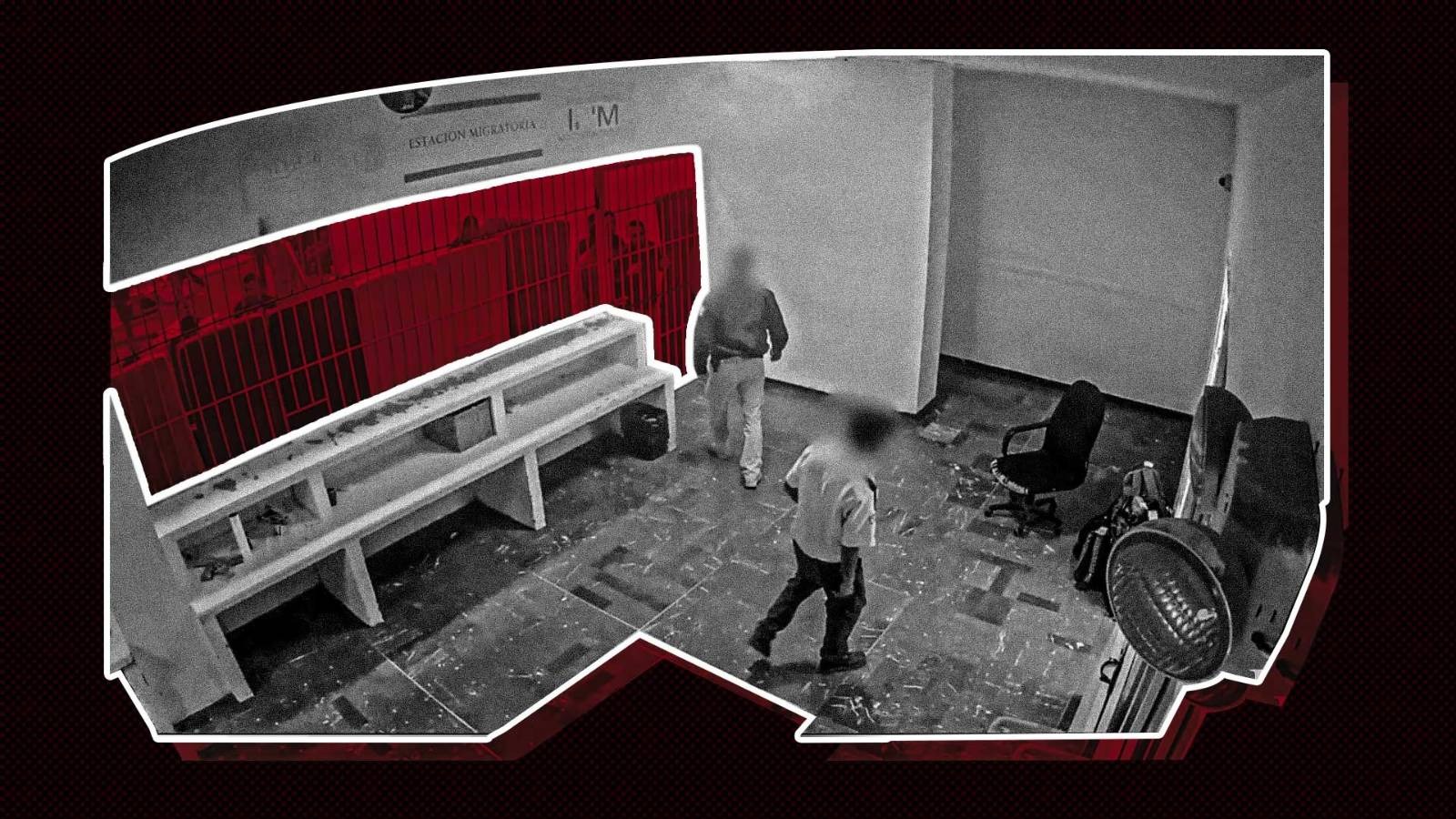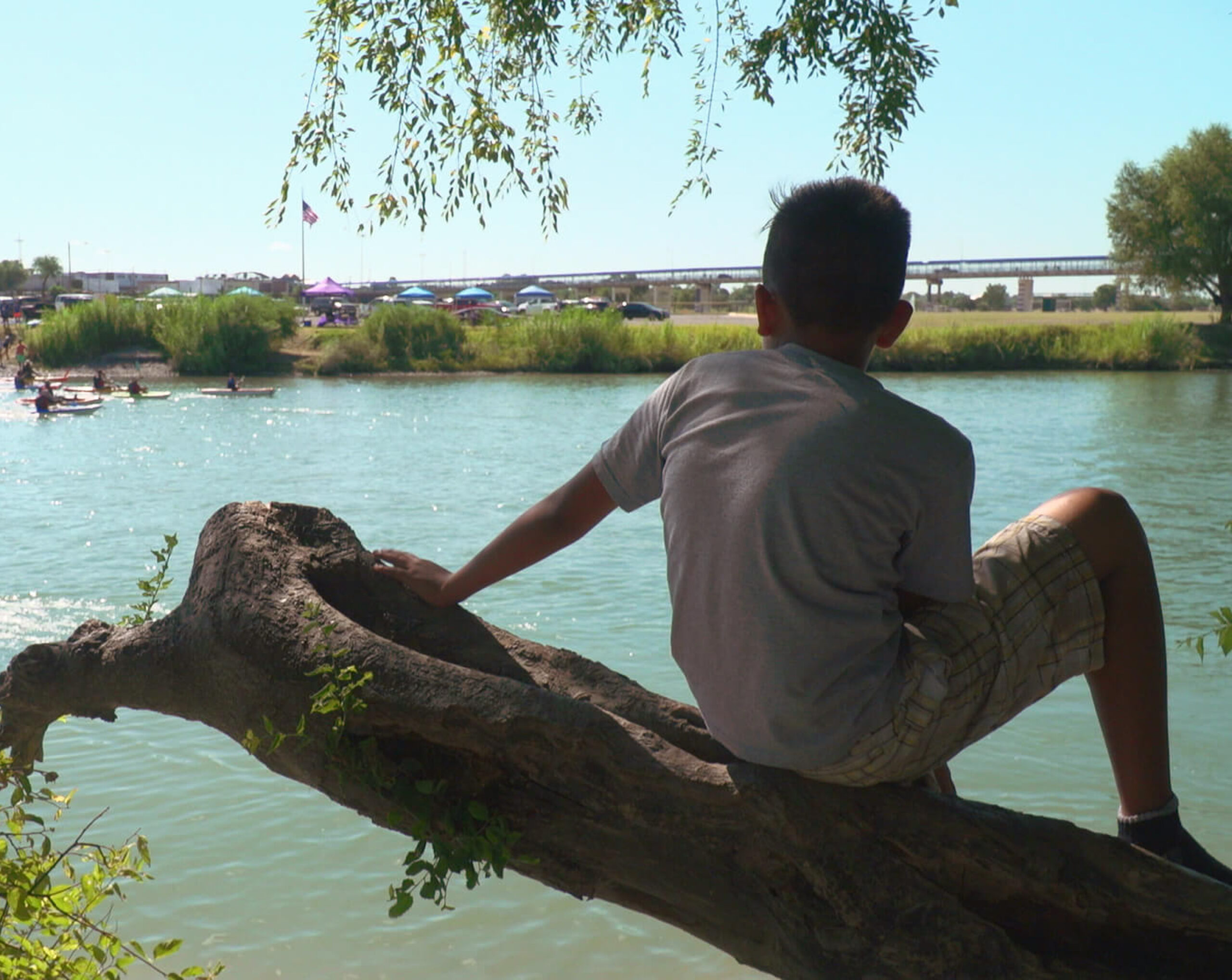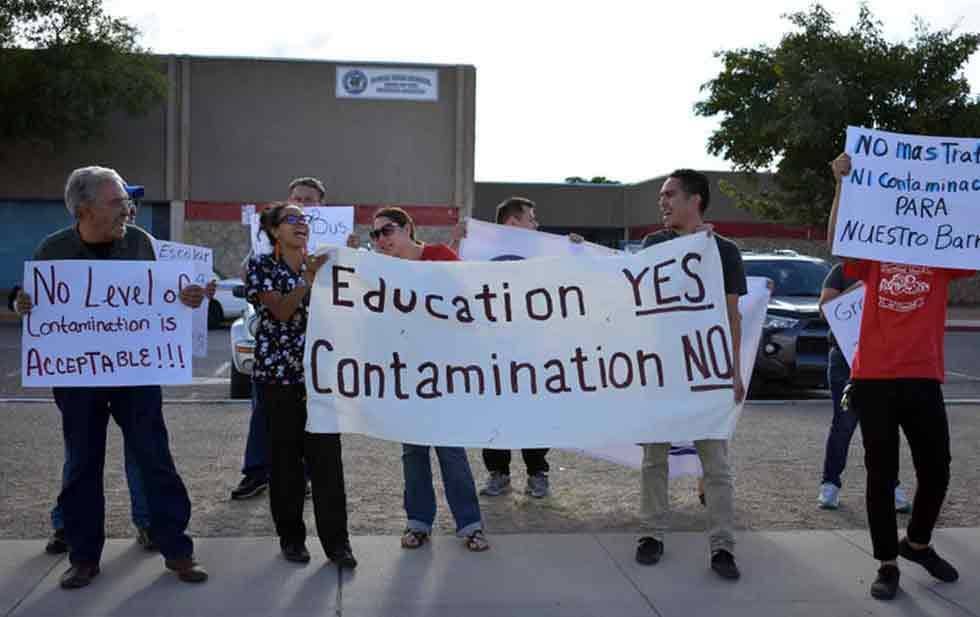
Alleging ‘Environmental Racism,’ El Paso Activists File Civil Rights Complaint Against School District
“EPISD didn’t propose [a hub for 124 buses] anywhere else because other communities wouldn’t have accepted it,” said Chamizal community organizer Hilda Villegas.

Above: Familias Unidas del Chamizal has organized at least three protests against the proposed hub since December 2017.
Katherine Villegas, 16, is a junior at Bowie High School in El Paso. She lives in the Chamizal neighborhood, a border community besieged by environmental hazards and a long legacy of segregation. Here, a metal scrap yard stands only a few feet away from an elementary school, and the maquiladoras in Ciudad Juarez are just across the river. Villegas’ community is bordered on the east by an international bridge, where traffic from trucks shuttling back and forth across the border can pile up for miles. Air pollution from the trucks and industrial operations often smothers the community of about 7,000 in a blanket of haze.
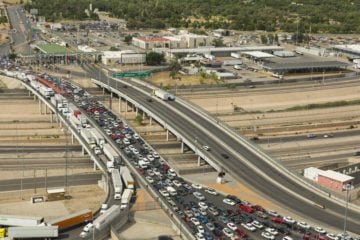
Now, Villegas’ school district wants to add one more pollution source — a hub to house 124 of the district’s buses adjacent to Bowie’s football field, where Villegas runs on the track team after school. The hub would be the El Paso Independent School District’s (EPISD) central bus facility and would serve as a refueling station and maintenance facility for buses across the district.
“The pollution is bad as it is,” Villegas told the Observer. “They’re not taking into consideration what it’s going to mean for future generations, like my brother and sister who will go to this school. You don’t see this in the richer West Side.”
Villegas is a member of Familias Unidas del Chamizal, a community group founded by her mother, Hilda Villegas, to advocate for the neighborhood and the people who live there. For the last few months, the grassroots group has been protesting the proposal for a bus hub, citing the additional pollution, traffic and potential safety hazards it would bring to Chamizal. On Tuesday, the group, represented by Texas RioGrande Legal Aid (TRLA), filed a Title VI Civil Rights complaint with four federal agencies that provide funding to the school district. If the agencies accept the complaint, they might delay the project while they assess the effect it will have on Chamizal. Ultimately, the agencies could use the threat of withdrawing federal funding to pressure the district to find an alternative location for the bus hub.
“It’s environmental racism and it’s a civil rights violation,” said Hilda Villegas. “EPISD didn’t propose [the bus hub] anywhere else because other communities wouldn’t have accepted it.”
The Chamizal neighborhood is overwhelmingly Hispanic and has a significant population of foreign-born residents. While El Paso as a whole is about 80 percent Hispanic and 24 percent foreign-born, Chamizal is more than 97 percent Hispanic and has a foreign-born population of 40 percent. At Bowie High School, English is not the primary language for more than half its approximately 1,500 students, as compared to about 28 percent in the entire school district. In the civil rights complaint, the attorneys representing Chamizal residents argue that the “plan to relocate the district’s transportation and maintenance hub to Bowie High School is unlawful because it will cause disproportionate impacts based on race and national origin.”
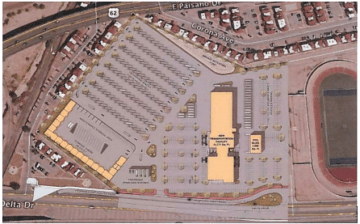
According to the EPA, exhaust from bus terminals housing more than 100 buses within half a mile of a school can cause pollution and worsen children’s health. Kids in El Paso are already sicker than the national average, with a 2014 study finding that 17 percent have asthma and more than half have allergies. Children who are poor and have a Spanish-speaking caretaker were also more likely to have to seek care at expensive emergency rooms or hospitals, lacking access to preventive care. Another 2016 study found that children in EPISD who were exposed to higher levels of emissions from vehicles had lower GPAs. “The confluence of social and environmental risk factors creates a situation of ‘multiple jeopardy’ for many El Paso school children,” the researchers noted.
Erin Gaines, an attorney with TRLA, said that these “compounding issues” should be an important factor in deciding where to locate the bus hub. The children of Chamizal already have to cope with high levels of pollution from multiple sources, she said.
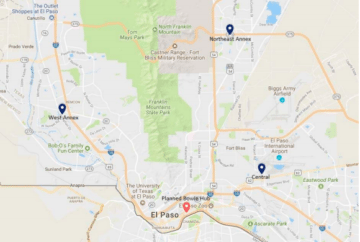
Gustavo Reveles, director of community engagement at EPISD, said that “from a logistics and land-use perspective” the land adjacent to Bowie High School is “the ideal location for a bus hub that will serve the transportation needs of the schools in the immediate area.” The district has met all the environmental requirements needed to build the facility and has studied the soil and air quality in the neighborhood, he said. The facility will have a “positive impact” on the neighborhood and “bring modern and aesthetically-pleasing development to an area that had been underutilized.” Late last month, the district posted a request soliciting bids to construct the facility.
The district has also said that it will switch to propane buses to decrease air pollution, but Gaines isn’t convinced the district has the money to retrofit all the buses to run on propane or even that doing so will eliminate toxic exhaust emissions. “There’s no evidence that’s a plan they can implement other than an inspiration they stated,” she said.
“It’s environmental racism and it’s a civil rights violation.”
There are few historical reasons for Hilda Villegas to trust that the school district will do what’s in the best interest of her children. Until the 1950s, schools south of the railroad tracks that serve the Chamizal neighborhood were built to segregate Hispanic and African-American students. The legacy of segregation continues to have a profound effect on those schools. Since 2009, Bowie High School has been mired in a cheating scandal. Administrators and teachers at the school were caught transferring and removing poor-performing students, who were often Hispanic and foreign-born, in order to inflate standardized test scores tied to funding.
“There’s a history of discrimination,” said Hilda Villegas. “They forced our students out and some were held back so they could show the school is complying academically with state educational policies.”
Villegas worries the pollution may get so bad that she’ll have to move. “It’s forced displacement,” she said. “If we allow the district to put the bus hub, our children’s lives are being cut short. This is something that is killing us slowly.”
Editor’s note: This story has been updated to include comment from EPISD.

